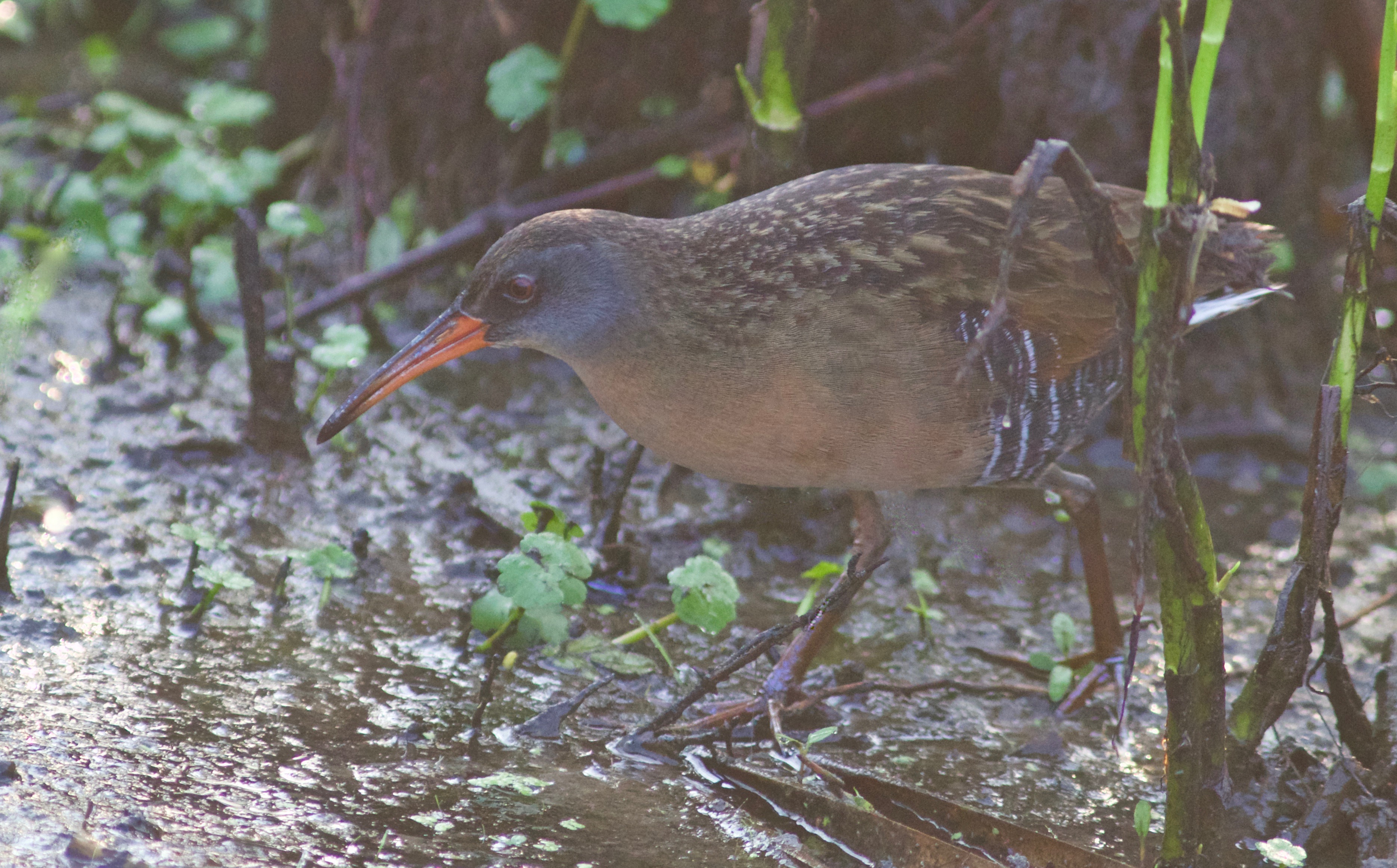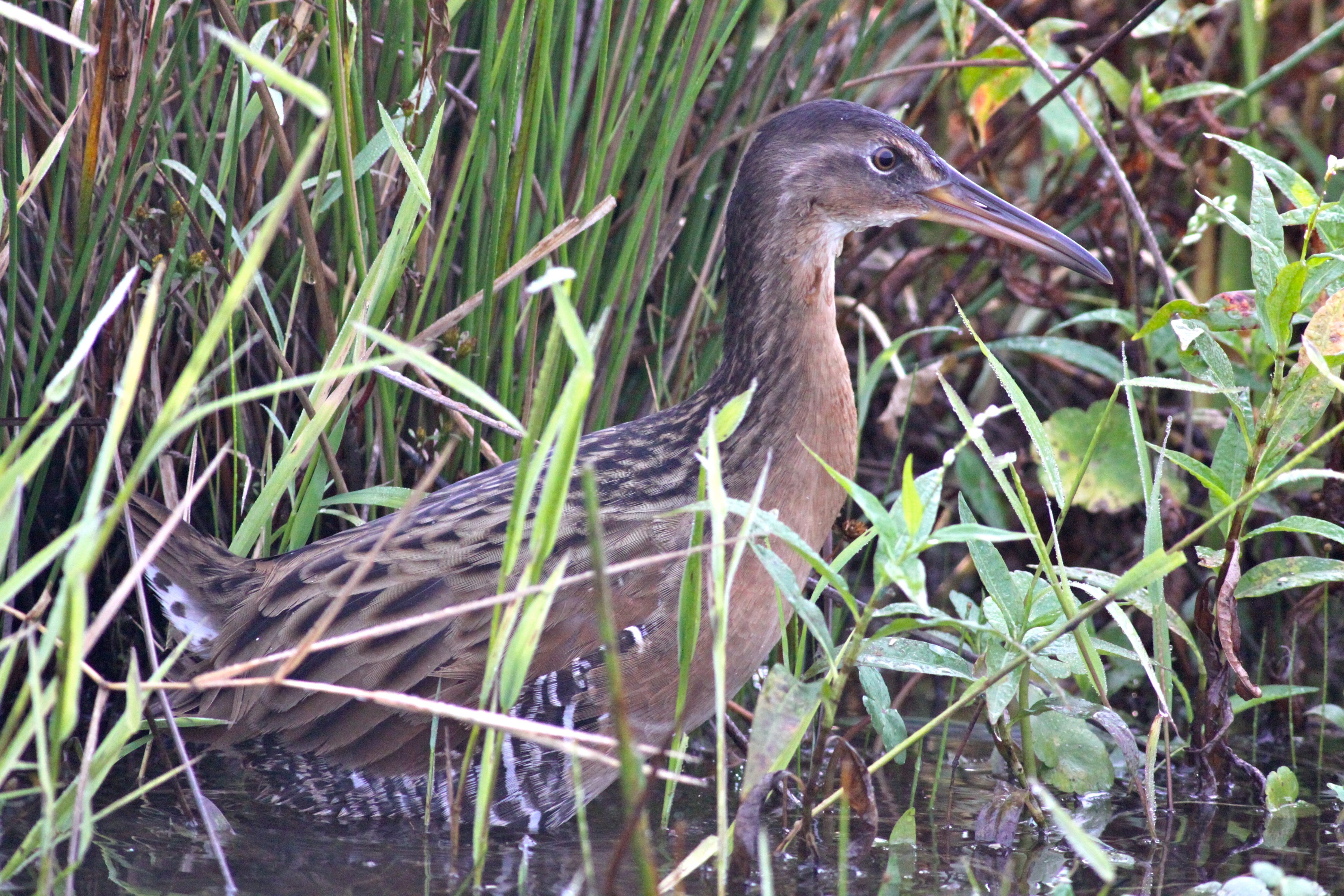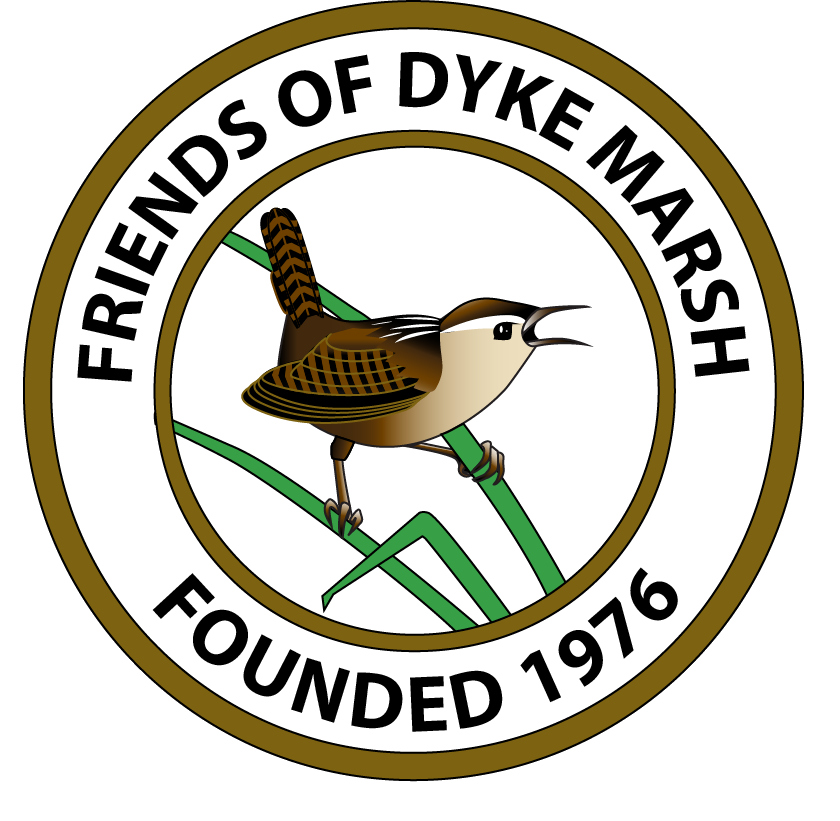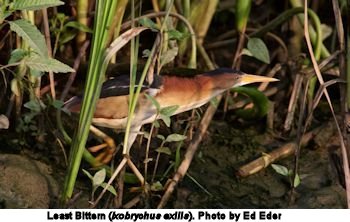On February 26, 2017, Patrice Neilsen gave a presentation on her research on secretive bird species of the Washington, D.C., region. She studied the king rail, Virginia rail, sora, least bittern and American bittern in surveys at 51 points in 25 marshes in 2013, 2014 and 2015. She surveyed at sunrise or sunset three times a year. She found no Virginia rails, sora or American bittern, but found least bitterns and king rails in several locations.
 Virginia Rail (Rallus limicola). Photo by Ed Eder
Virginia Rail (Rallus limicola). Photo by Ed Eder
Secretive marsh birds are not usually active and easy to see, she explained. Their calls are quiet and infrequent and they are usually well camouflaged. Most research on these birds has been done on the birds in rural areas. Very little is known about them in urban or small remnant wetlands.
She was trying to answer two questions: (1) Can these birds use small, urban wetlands? (2) What characteristics make these wetlands attractive to secretive marsh birds?
Here are a few highlights of her talk:
 King Rail (Rallus elegans). Photo by Ed EderAll rail species and American bittern populations are in decline.
King Rail (Rallus elegans). Photo by Ed EderAll rail species and American bittern populations are in decline.- Least bitterns and king rails are breeding in the area. They use both natural and restored marshes.
- Both least bittern and king rail avoid woody vegetation.
- Persistent vegetation, like dry cattails that overwinter, are attractive for nesting and shelter.
- King rails prefer a more diverse marsh to a monoculture.
- Taller vegetation is important for least bitterns.
- Once these birds choose an area, they tend to stay close by, within several hundred meters.
This program was cosponsored by the Audubon Society of Northern Virginia, the D.C. Audubon Society, the Prince Georges (Maryland) Audubon Society, the Northern Virginia Bird Club and the Virginia Society of Ornithology.


